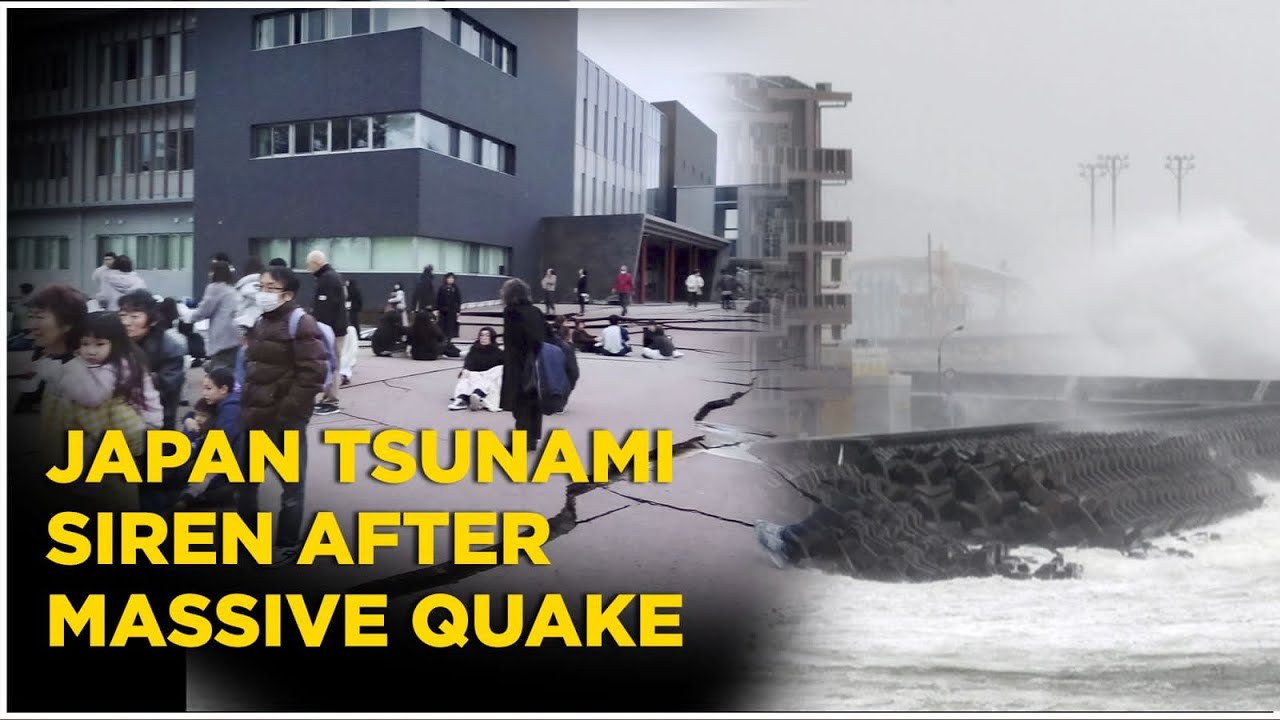Introduction
Japan, a nation nestled in the Pacific Ring of Fire, has recently faced a series of seismic challenges, leaving its residents and infrastructure in turmoil. In this comprehensive article, we delve into the details of the recent earthquakes, their impacts, and the broader context of seismic activity in Japan.
The Earthquake Swarm
In a recent report from The Times of India, it is revealed that Japan experienced over 20 earthquakes with a magnitude exceeding 4. The seismic upheaval led to widespread power outages and the closure of highways, affecting thousands.
Met Office’s Alert
The Met office in Japan played a crucial role in monitoring and alerting the public about the seismic activity. With a total of 21 earthquakes above magnitude 4.0, their timely warnings were instrumental in minimizing casualties.
Unraveling the Aftermath
Buildings Collapsed and Roads Cracked
As detailed in The Times of India, the aftermath was grim, with buildings collapsing and roads cracking open. Coastal areas were particularly vulnerable, facing the additional threat of tsunamis triggered by the seismic events.
Fukushima Daiichi Accident Revisited
The specter of the 2011 Fukushima Daiichi accident looms large in the minds of the Japanese people. According to the World Nuclear Association, the Fukushima Daiichi nuclear accident in March 2011 had profound consequences. Our exploration into the causes and actions taken since provides insight into this tragic event.
Earthquakes Through History
Live Science takes us on a historical journey, highlighting the 20 largest recorded earthquakes. It reveals the regions globally that regularly experience significant seismic activity, shedding light on the patterns and magnitude of these geological events.
Keeping Up with Current Events
Google News provides real-time updates on the ongoing situation. Live reports, such as the tsunami hitting Japan after a series of strong earthquakes, keep the public informed and aware.
Understanding the Numbers
Wikipedia offers a comprehensive list of earthquakes in 2022, categorizing them based on magnitude. This list provides a valuable resource for researchers and the general public to understand the scope of seismic activity in a given year.
Exploring Scientific Perspectives
In a Popular Science article from December 2004, the focus shifts to scientific problem-solving. The publication discusses approaches to solving mathematical problems, drawing intriguing connections between earthquakes and the repetition of operations.
Echoes from the Past
Daily Graphic takes us back to May 12, 1997, providing a snapshot of the aftermath of earthquakes. The vivid descriptions of power loss, halted factories, and homes without water resonate with the recent events in Japan.
Quake in Japan – March 17, 2022
CNBC reports a powerful earthquake off Japan’s northeast coast on March 17, 2022. The aftermath included casualties, suspended factory operations, and widespread power cuts, painting a stark picture of the immediate impact.
Japan is situated in a seismically active region known as the Pacific Ring of Fire, making it prone to earthquakes. The country has a long history of seismic activity, and earthquakes have significantly shaped its culture, infrastructure, and disaster preparedness measures. Understanding Japan’s earthquake crisis involves exploring various aspects, including historical events, geological factors, and societal responses.
- Geological Context:
- Japan is located at the convergence of several tectonic plates, including the Pacific Plate, Philippine Sea Plate, and Eurasian Plate. The subduction zones and plate boundaries in this region create intense seismic activity.
- Subduction of the Pacific Plate beneath the Eurasian Plate along the Japan Trench is a primary source of powerful earthquakes, including mega-thrust events.
- Historical Earthquakes:
- Notable historical earthquakes include the 1923 Great Kanto Earthquake, the 1995 Kobe Earthquake, and the 2011 Tohoku Earthquake and Tsunami.
- The Great Kanto Earthquake caused widespread destruction in the Tokyo region and prompted advancements in earthquake-resistant building designs and urban planning.
- 2011 Tohoku Earthquake and Tsunami:
- The Tohoku earthquake on March 11, 2011, was a magnitude 9.0–9.1 mega-thrust earthquake, the most powerful ever recorded in Japan.
- The earthquake triggered a massive tsunami, leading to the Fukushima Daiichi nuclear disaster and causing extensive damage to coastal areas.
- Impact on Infrastructure:
- Japan has implemented stringent building codes and earthquake-resistant construction techniques to mitigate damage. However, older structures may still be vulnerable.
- Critical infrastructure, including transportation networks and utilities, is designed to withstand earthquakes to ensure rapid recovery.
- Early Warning Systems:
- Japan has a sophisticated earthquake early warning system that provides alerts seconds to minutes before strong shaking occurs. This allows people to take cover and automated systems to shut down critical facilities.
- Crisis Management and Preparedness:
- Japan places a strong emphasis on disaster preparedness, with regular drills and public education campaigns to inform citizens about earthquake safety.
- The government has established disaster response mechanisms and organizations, such as the Japan Meteorological Agency and the Fire and Disaster Management Agency.
- Technological Innovations:
- Ongoing research focuses on developing advanced technologies for earthquake prediction, monitoring, and response. This includes early warning systems, seismometers, and geospatial technologies.
- International Collaboration:
- Japan collaborates with international organizations and researchers to share knowledge and expertise in earthquake research, preparedness, and response.
Understanding Japan’s earthquake crisis involves recognizing the complex interplay of geological, historical, and societal factors. The nation’s resilience and proactive approach to disaster management continue to be crucial in mitigating the impact of seismic events.
Frequently Asked Questions
Q: How does Japan prepare for earthquakes?
A: Japan has a robust early warning system, with organizations like the Met office providing real-time alerts and guidelines for the public.
Q: What regions globally are prone to large earthquakes?
A: According to historical data from Live Science, regions around the world located in the Pacific Ring of Fire are more prone to large earthquakes.
Q: Is there a correlation between mathematical problem-solving and earthquakes?
A: Popular Science explores the intersection of earthquake patterns and mathematical problem-solving in a scientific context.
Conclusion
This exploration into Japan’s recent seismic events provides a multifaceted understanding of the earthquakes, their historical context, and the scientific perspectives surrounding them. Stay informed, stay prepared.
Meta Description: Explore the recent seismic events in Japan, their historical context, and the scientific insights surrounding earthquakes. Stay informed with real-time updates and historical analyses.





